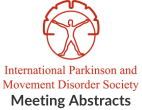Spastic Ataxia and Motorneuron disease as possible manifestations of ATP13A2 (PARK 9) variants
Objective: To describe 5 late-onset sporadic cases carrying either biallelic or monoallelic variants in ATP13A2, showing either spastic ataxia(Spatax) or primary lateral sclerosis (PLS) as…Rare genetic and clinical presentation of SPG7-related Hereditary Spastic Paraplegia.
Objective: Describe a rare genetic and clinical presentation of SPG7-related Hereditary Spastic Paraplegia. Background: SPG7-related spastic paraplegia (SPG7) is a hereditary spastic paraplegia caused by…Spinocerebellar Ataxia Autosomal Recessive Type 10 Misdiagnosed as a Multiple System Atrophy Type C: a Case Report.
Objective: Spinocerebellar ataxia autosomal recessive type 10 (SCAR 10) is a very rare cause of slowly progressive cerebellar ataxia caused by mutations of ANO10 gene…Outcomes From Genetic Testing in a UK Movement Disorder Clinic
Objective: The reported yield from next generation sequencing (NGS) in Movement Disorder clinics is 11.3 – 22% [1,2]. We aimed to determine current practice and yield…Expanding the clinical phenotype of ataxia associated with PMPCA mutations
Objective: To describe two probable cases of autosomal recessive ataxia associated with mutations in the PMPCA gene (ATX-PMPCA) secondary to novel compound heterozygous variants. Background:…Learnings from inaugural year of foundation sponsored genetic counseling and testing program for Spinocerebellar Ataxia (SCA) types 1, 2, and 3
Objective: To describe volume, genetic results, and participant perceptions of foundation sponsored genetic counseling and testing program for SCA 1, 2, and 3. Background: Molecular…Non classified SCA-like presentation of GEMIN5 + GYG-1 mutation. Case report
Objective: To report the first case of a patient with GEMIN5 and GYG-1 genes mutations who presented with features of both SCA and myopathy. Background:…Intronic FGF14 GAA repeat expansions are a common cause of ataxia syndromes with neuropathy and bilateral vestibulopathy
Objective: To report on the frequency of intronic GAA expansions in the fibroblast growth factor 14 (FGF14) gene in patients with an unexplained cerebellar ataxia,…Description of a series of GAA-FGF14 ataxia / SCA27b patients
Objective: To describe the main features of a series of 12 patients with GAA-FGF14 ataxia.To describe the main features of a series of 12 patients…Clinical spectrum, imaging characteristics and care giver burden assessment of early onset non-dominant progressive cerebellar ataxias
Objective: To characterise the phenotypic and radiological spectrum of patients with early onset non-dominant progressive cerebellar ataxias and to assess the impact of the disease…
- « Previous Page
- 1
- …
- 4
- 5
- 6
- 7
- 8
- …
- 28
- Next Page »
